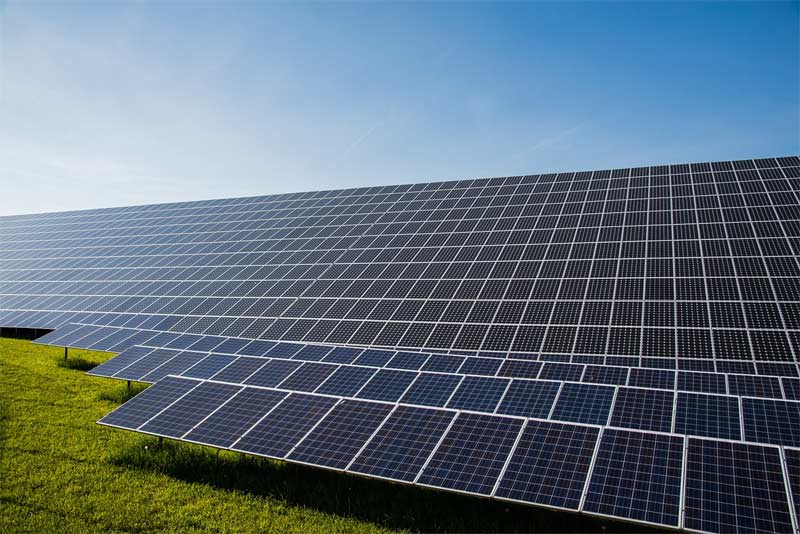How solar cells work are usually less interesting for people than the fact that it can reduce electricity costs. If you are curious, we will explain how a solar cell works.
Structure of a solar cell
It is crucial to know the structure of the solar cells to understand how they work. A solar cell consists of three layers, an upper and a lower layer, with the boundary layer in between. All three layers are made of silicon. The upper layer is enriched with phosphorus atoms, the lower with boron atoms.
This is how a solar cell works
When sunlight hits the solar cell, boron electrons migrate through the boundary layer. The negatively charged electrons collect on one side and the positively charged protons on the other. This creates a negative and a positive pole, similar to a battery.

The light or heat can be transmitted via a so-called semiconductor. Silicon is an ideal semiconductor because it is inexpensive as a component of quartz sand and can be produced in a highly pure and single-crystal form. In order to correctly conduct the positive and negative charge carriers, foreign atoms are built into the semiconductor.
Plates made of silver or aluminum are attached to the top and bottom of the solar cells and these are connected to each other with a cable. Even with little sunlight, solar panels generate electricity. However, the more sunlight hits the solar cell, the more electrons migrate and the more electricity is generated.
Saving solar power
If you store and use solar power, you reduce electricity costs and protect the environment as well. Solar power is popular and the required systems can already be found on many houses. However, the process of storing the electricity produced and using it for one’s own needs is less known and more widespread. As long as the storage unit or battery is full, no electricity is drawn from the public grid. Only when the batteries are empty is additional electricity required.

Costs
The pure electricity costs are lower. However, there are very high costs for the systems. The setup of solar panels would cost somewhere around Rs 70,000 to Rs 1,20,000 per kW. It would include Solar panels, inverter, charge controller, batteries, wiring, connectors, junction box, etc.
Batteries
There are essentially two types of batteries. One is based on a lead-acid mixture and the other is a lithium-ion battery. If you want to buy a cheap battery, you should choose a lead battery. However, compared to lithium-ion batteries, they do not last as long, are maintenance-intensive and do not charge as quickly. The average lifespan of a lead battery is around ten years, while lithium-ion batteries can last up to 20 years.
Size
The storage size of the battery is a decisive factor to calculate the cost. It depends on the requirement. An average four-person household needs about four to five kilowatt hours. The storage size also depends on the solar panel because it must be able to produce enough electricity to fill the storage. You need to Calculate your needs according to the performance of system to select the required battery size.

Now you know how the solar cells work and how to calculate the cost of installing the solar panel. There are several opportunities and subsidies that the government offers to promote a sustainable and renewable energy which you can take benefit of.


